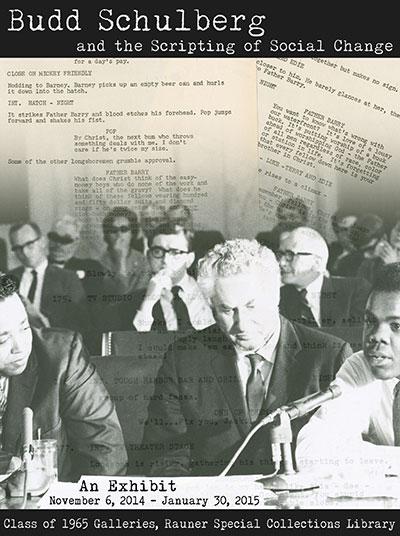A Face in the Crowd, starring Andy Griffith, Patricia Neal and Walter Matthau, recounts the story of a back country entertainer named Lonesome Rhodes and his whirlwind rise to fame, fortune, and power on national television. Film producer Elia Kazan worked with Budd Schulberg to create this provocative film that questions the cult of personality fostered by the newly popular medium of television. As Schulberg stated in a letter to Kazan in 1956:
Whether it is Milton Berle, Arthur Godfrey, Jackie Gleason, Bishop Sheen or Disneyland, it is evident that a new personality or show can strike this world with the force and suddenness (and sheer shattering noise) of lightning.
As television became ubiquitous in the United States during the 1950s, entertainment, advertising, and politics became increasingly indistinguishable from one another. The critique offered by A Face in the Crowd remains relevant today as mainstream culture and the cult of personality continue to influence American political and social movements.
- Program of the World Premiere of A Face in the Crowd, New York, Globe Theatre, 28 May 1957. MS-978, Box 71, Folder: 32 (“A Face in the Crowd,” Formal World Premiere, program, 1957)
- Bill Davidson, “Arthur Godfrey and His Fan Mail,” Collier’s, 2 May 1953. MS-978, Box 71, Folder: 25 (“A Face in the Crowd,” “Arthur Godfrey and His Fan Mail” by Bill Davidson, 1953)
- Arthur Godrey was an American radio and television broadcaster and entertainer who rose to astonishing fame in the 1950s. Schulberg’s Lonesome Rhodes character is partially based on Godfrey, who was able to relate on the level of a neighbor and friend to millions of Americans.
- Budd Schulberg to Elia Kazan, circa 1956. Possibly MS-978, Box 71, Folder: 54 (“A Face in the Crowd,” correspondence, 1954-1979)
- “In Lonesome Rhodes we have hit on a truly representative figure. Naturally our Lonesome must be an individual in his own right, but from our talks, it does seem that he represents the dynamic-mercurial quality of TV success.”
- Elia Kazan to Budd Schulberg, 31 July 1955. Possibly MS-978, Box 71, Folder: 54 (“A Face in the Crowd,” correspondence, 1954-1979)
- Kazan describes the climactic scene when Marshy symbolically “kills” Lonesome Rhodes.
- “Un Homme Dans La Foule,” L’Avant-Scène du Cinéma, No. 40, 1 September 1964: 7-59. MS-978, Box 71, Folder: 50 (“A Face in the Crowd,” “Un Home Dans la Foule,” French program, 1964)
- Marshy “kills” Lonesome Rhodes by throwing herself on the switch to prevent the sound engineer from taking Lonesome Rhodes off the air. During these few seconds Lonesome Rhodes tells what he really thinks to his devoted fans, insulting them and unmasking his true persona on national television.
- Screenplay, A Face in the Crowd, Newtown Productions, 15 August 1956. MS-978, Box 69, Folder: 2 (“A Face in the Crowd,” script, Newtown Productions, Aug. 15, 1956)
- Budd Schulberg and Tom Glazer, “Just Plain Folks,” New York: Remick Music Corp., 1957. MS-978, Box 72, Folder: 11 (“A Face in the Crowd,” Sheet Music for Film: “Just Plain Folks”, 1957)
- Flyer advertising A Face in the Crowd, Charlou Productions, Inc., 1970. Possibly MS-978, Box 71, Folder: 34 (“A Face in the Crowd,” flyer for showing of film, undated)
- The four men in this flyer are Richard Nixon, Spiro Agnew, Ronald Reagan, and Andy Griffith. This image can be interpreted as an intersection between the entertainment industry, the cult of personality, and politics.
- Budd Schulberg, A Face in the Crowd: a Play for the Screen, New York: Bantam Books, 1957. Alumni S386f or Alumni S386fa
- Budd Schulberg and Stanley Silverman, The Lonesome Rhodes Show: A New Musical, Libretto Draft as of 16 April 1973. MS-978, Box 71, Folder: 17 (“A Face in the Crowd,” “The Lonesome Rhodes Show,” libretto, working copy, 1973)
- Several years after the film, Schulberg worked on a Broadway adaptation of A Face in the Crowd.
